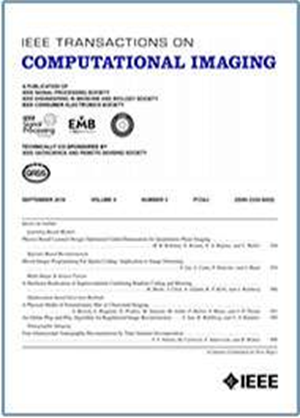NLCMR: Indoor Depth Recovery Model With Non-Local Cross-Modality Prior
IF 4.8
2区 计算机科学
Q2 ENGINEERING, ELECTRICAL & ELECTRONIC
引用次数: 0
Abstract
Recovering a dense depth image from sparse inputs is inherently challenging. Image-guided depth completion has become a prevalent technique, leveraging sparse depth data alongside RGB images to produce detailed depth maps. Although deep learning-based methods have achieved notable success, many state-of-the-art networks operate as black boxes, lacking transparent mechanisms for depth recovery. To address this, we introduce a novel model-guided depth recovery method. Our approach is built on a maximum a posterior (MAP) framework and features an optimization model that incorporates a non-local cross-modality regularizer and a deep image prior. The cross-modality regularizer capitalizes on the inherent correlations between depth and RGB images, enhancing the extraction of shared information. Additionally, the deep image prior captures local characteristics between the depth and RGB domains effectively. To counter the challenge of high heterogeneity leading to degenerate operators, we have integrated an implicit data consistency term into our model. Our model is then realized as a network using the half-quadratic splitting algorithm. Extensive evaluations on the NYU-Depth V2 and SUN RGB-D datasets demonstrate that our method performs competitively with current deep learning techniques.非局部交叉模态先验的室内深度恢复模型
从稀疏输入恢复密集深度图像本身就是一项挑战。图像引导的深度补全已成为一种普遍的技术,它利用稀疏的深度数据和 RGB 图像来生成详细的深度图。虽然基于深度学习的方法已经取得了显著的成功,但许多最先进的网络都是黑箱操作,缺乏透明的深度恢复机制。为了解决这个问题,我们引入了一种新颖的模型指导深度恢复方法。我们的方法建立在最大后验(MAP)框架之上,其特点是优化模型包含了非本地跨模态正则器和深度图像先验。跨模态正则利用了深度图像和 RGB 图像之间固有的相关性,从而加强了对共享信息的提取。此外,深度图像先验还能有效捕捉深度域和 RGB 域之间的局部特征。为了应对高异质性导致算子退化的挑战,我们在模型中集成了隐式数据一致性项。然后,我们使用半二次分裂算法将模型实现为一个网络。在 NYU-Depth V2 和 SUN RGB-D 数据集上进行的广泛评估表明,我们的方法与当前的深度学习技术相比具有很强的竞争力。
本文章由计算机程序翻译,如有差异,请以英文原文为准。
求助全文
约1分钟内获得全文
求助全文
来源期刊

IEEE Transactions on Computational Imaging
Mathematics-Computational Mathematics
CiteScore
8.20
自引率
7.40%
发文量
59
期刊介绍:
The IEEE Transactions on Computational Imaging will publish articles where computation plays an integral role in the image formation process. Papers will cover all areas of computational imaging ranging from fundamental theoretical methods to the latest innovative computational imaging system designs. Topics of interest will include advanced algorithms and mathematical techniques, model-based data inversion, methods for image and signal recovery from sparse and incomplete data, techniques for non-traditional sensing of image data, methods for dynamic information acquisition and extraction from imaging sensors, software and hardware for efficient computation in imaging systems, and highly novel imaging system design.
 求助内容:
求助内容: 应助结果提醒方式:
应助结果提醒方式:


